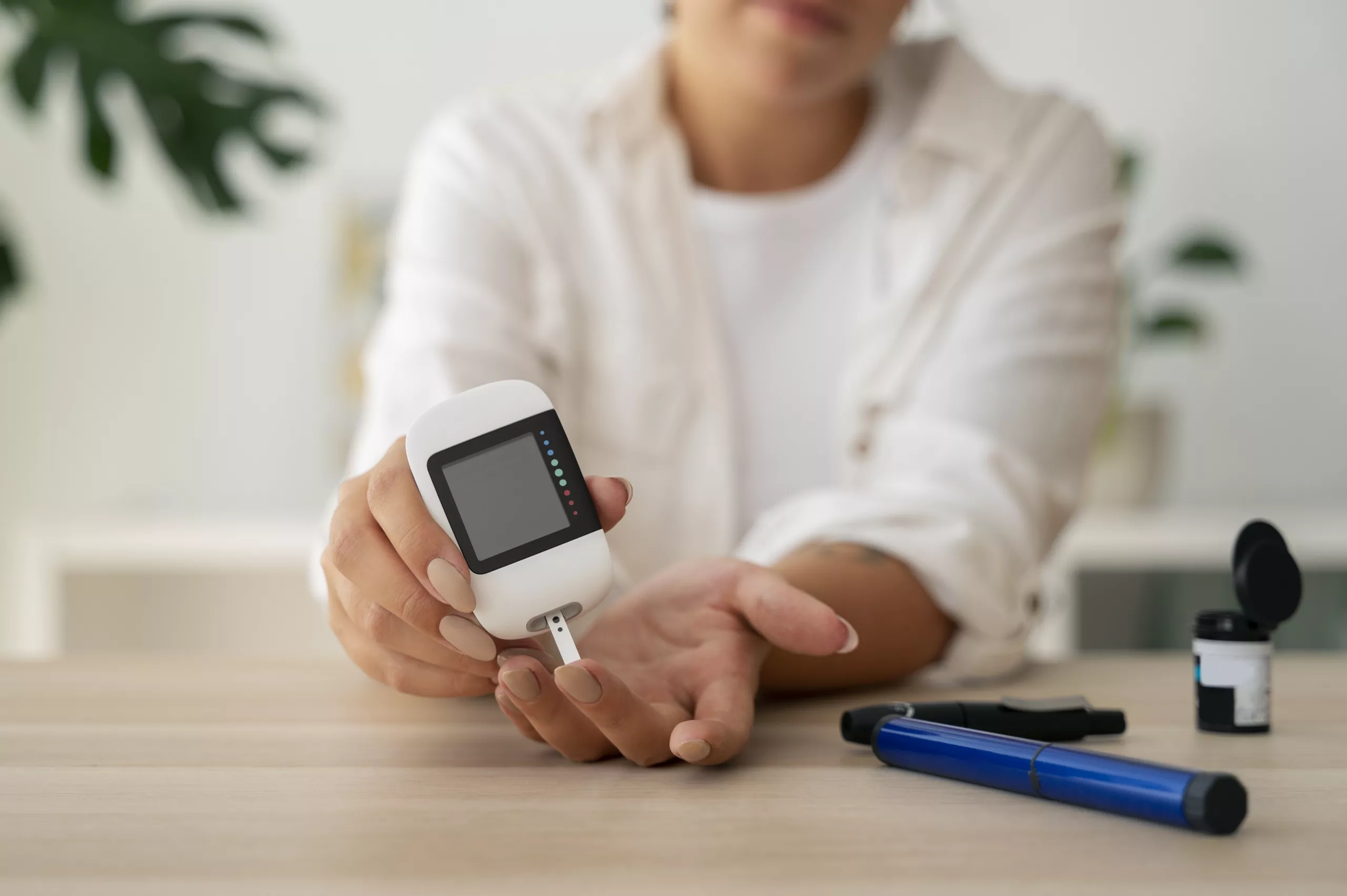
Diabetes is a chronic condition that affects the way your body converts food into energy. It affects an estimated 37.3 million people in the United States, or 11.3% of the population. Of those people, 8.5 million (23%) remain undiagnosed.
Understanding the causes and risk factors of diabetes may help you avoid this condition and empower you to change your lifestyle, potentially reducing your risk. If you think you have diabetes based on your symptoms, seeking treatment early on may help you get the care you need and possibly avoid complications.
Types of Diabetes
There are four types of diabetes: type 1, type 2, prediabetes, and gestational diabetes. All types of diabetes can cause you to have abnormally high levels of blood sugar (also called blood glucose).
Type 2 Diabetes
Type 2 is the most common type of diabetes, as it affects between 90% and 95% of all people with diabetes. In type 2 diabetes, your cells become resistant to insulin. This causes your pancreas to work harder to produce insulin and make the cells respond. In many instances, your pancreas cannot maintain this level of functioning, and your blood sugar level rises.
Type 1 Diabetes
Type 1 diabetes affects between 5% and 10% of people with diabetes. When you have type 1 diabetes, your pancreas makes too little insulin or no insulin at all. As a result, your blood sugar level rises because there’s not enough insulin available to move glucose into your cells for your body to use as energy.
Prediabetes
Prediabetes affects most people who remain undiagnosed with diabetes. When you have prediabetes, your blood sugar level is higher than normal, but not high enough for your doctor to officially diagnose it as type 2 diabetes. If you have prediabetes, your doctor may recommend making healthy lifestyle changes to prevent the condition from progressing to diabetes.
Gestational Diabetes
Gestational diabetes is a type of diabetes that can occur during pregnancy. The hormonal changes that occur during this time can affect your body’s insulin levels to increase the risk for insulin resistance. With healthy lifestyle changes, gestational diabetes may go away after pregnancy. However, 50% of women with gestational diabetes go on to develop type 2 diabetes after pregnancy.
Risk Factors for Diabetes
Anyone can get diabetes. However, certain factors may increase your risk of developing the condition. Common risk factors for diabetes include:
- Family history: You may be at greater risk if diabetes runs in your family.
- Weight: Being overweight or obese increases your risk.
- Activity level: Having a sedentary lifestyle or exercising fewer than three times a week can increase your risk.
- Nutrition: A diet high in sugar and processed foods is linked to a higher risk of diabetes.
- Ethnicity: Diabetes is more common among people who are Black, Hispanic, Latino, Native American, or Alaska Native.
Symptoms of Diabetes
Symptoms of diabetes are roughly the same across the board regardless of the type you have. If you have prediabetes or type 2 diabetes, your symptoms may develop slowly over several years. Common symptoms of diabetes include:
- Frequent urination, especially at night
- Excessive thirst
- Excessive hunger
- Blurred vision
- Unintentional weight loss
- Numbness or tingling in the hands or feet
- Extreme tiredness or fatigue
- Dry skin
- Wounds that are slow to heal, or that never seem to heal
- Frequent infections and illnesses
- Stomach pain
- Nausea and vomiting
- What Are the Complications of Diabetes?
- Having chronically high blood sugar levels can eventually lead to organ damage, hormonal imbalances, and other serious complications. This is why it’s important to get treatment if you have diabetes and to see your doctor regularly if you meet any risk factors for diabetes.
- Potential complications of diabetes include:
- Diabetic nerve damage, or neuropathy: High blood sugar levels can damage nerves anywhere in your body, though hands and feet are most commonly affected.
- Diabetic eye disease, or retinopathy: High blood sugar levels can also damage blood vessels in your eyes, increasing your risk for eye conditions including glaucoma and blindness.
- Kidney damage
- Heart disease
- Foot ulcers: Nerve damage in your feet can make it difficult for you to feel sores and wounds that develop on your feet.
- Amputation: Foot ulcers that go untreated or undetected can increase your risk for gangrene and eventual amputation.
- Gum disease
Treatments for Diabetes
Insulin is the most common treatment for all types of diabetes. Because the pancreas cannot produce enough insulin to meet your body’s demands, insulin medications can usually provide enough insulin to help you control your diabetes.
Other common treatments for diabetes include:
- Diet and nutrition modifications: Certain foods can naturally improve the way your body uses insulin and may also boost pancreatic health. Fruits, vegetables, whole grains, and lean proteins are some of the foods that may improve diabetes. Your doctor may suggest modifying your diet to include more of these foods and fewer sugary foods.
- Exercise: Exercise is shown to make your body more sensitive to insulin and improve the way your body uses it. It can also help you lose excess weight that may be contributing to the condition.
- Metformin: This medication can lower your blood sugar levels due to how it may improve the way your body uses insulin.
Tips for Preventing Diabetes
The key to preventing diabetes is understanding its risk factors and causes. Certain healthy lifestyle behaviors may reduce your risk for diabetes, even if you meet non-modifiable risk factors, such as having a family history of diabetes. Steps you can take to reduce your risk include:
- Exercising regularly
- Maintaining a healthy weight
- Eating plenty of whole, healthy foods like fruits and vegetables
- Limiting your intake of sugar and alcohol
- Not smoking
- Seeing your doctor regularly for wellness checkups
Make an appointment with your doctor right away if you think you may have diabetes. Your doctor can perform an exam, review your medical history, and talk to you in greater detail about your treatment options.
Resource Links
National Diabetes Statistics Report via the Centers for Disease Control and Prevention
Diabetes Basics” via the Centers for Disease Control and Prevention
Simple Steps to Preventing Diabetes via Harvard School of Public Health

